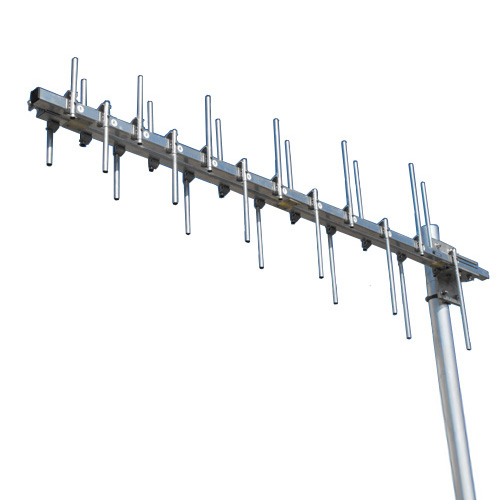Today, we have a multitude of antennas available on the market. A deeper understanding of antennas allows you to select the right wireless solution, which optimizes system performance to meet your specific needs. A directional antenna is one of the most popular wireless solutions. It is not a single antenna but rather a category of antennas designed for directional radiation patterns. If you are planning to purchase directional antennas, it is important to select a solution that meets your requirements. In this guide, we will explore the fundamentals of directional antennas and provide all the essential details you need to make informed decisions about them. So here we go!
What is a Directional Antenna?
A directional antenna is a wireless solution that is used for focusing signals in one direction. Unlike omnidirectional antennas, this device helps antenna enthusiasts to share and receive signals from a specific location. This unique quality of directional antennas helps users use this solution for long-distance, point-to-point communication, and more.
How Far Will a Directional Antenna Reach?
The range of a directional antenna depends on many factors, including its gain, frequency, transmit power, environmental conditions and obstacles. The shape and size of antennas significantly influence their frequency range, as different designs are optimized for specific frequencies. In ideal conditions, high-gain directional antennas can cover distances of 10–20 kilometres or more for point-to-point communication, such as in wireless bridges or long-range WiFi networks.
However, in a situation where the number of other electrical devices, such as WiFi routers and Bluetooth devices, is high, the effect of directional antennas can decrease because of the interference of other signals. Common directional antennas such as Yagi or parabolic dish antennas are popularly used in applications like remote communications, broadcasting, and wireless networking over long distances.
Directional Antenna Types
Directional antennas come with different purposes. Based on their size, shape and frequency range, they are classified into different types. Some of the major types of directional antennas are described below:
Yagi-Uda Antenna
A Yagi-Uda antenna is a well-known type of directional antenna. This wireless solution creates reliable connections over long distances and allows users to broadcast and share signals in a particular direction. Yagi antennas can be identified with their driven element, a reflective element, and one or many director elements. The Yagi Uda antenna features high gain properties that make it possible to use it for applications such as data communication, defence, military, electric warfare, satellite communication, and more.
Parabolic Reflector Antenna
A parabolic dish antenna is a popular type of directional antenna. This device can be identified by its curved reflectors, which are known as parabolic reflectors. This part helps the antenna focus radio waves at a specific focal point. The unique structure of a parabolic antenna plays a crucial role in capturing and emitting signals over long distances. This antenna is helpful in many applications for reliable and efficient connectivity. Those applications are telecommunication, broadcasting, and research.
Horn Antenna
A horn antenna is a well-known directional antenna used to interact with microwave frequencies. The structure of this antenna is small and lightweight making it ideal for installation in small spaces. It is commonly used for super-high or ultra-high frequencies ranging from 300 MHz to 30 GHz. That gives users the flexibility to achieve signals as per their expectations and purposes. Horn antennas are used in applications such as surveillance systems, high-frequency communication networks, space communication, astronomical research, and more.
Log-Periodic Dipole Array (LPDA)
A Long-Periodic Dipole Array (LPDA) is another directional antenna designed to cover a wide range of frequencies. The antenna has a unique structure consisting of multiple dipole antennas arranged in a geometric progression. Each element in the structure is larger than the previous one, which helps in giving wideband performance and directional radiation patterns. Log Periodic Dipole Array antennas are helpful in applications such as television reception, radio communications, and scientific research.
Patch Antenna
Patch antenna is one of the significant directional antennas that function as directional and omnidirectional antennas. The antenna consists of a radiating patch mounted on a dielectric substrate that sits on top of a ground plane (a large metal sheet). Patch antennas are small and low-profile wireless solutions. These antennas are helpful in applications such as mobile devices, drone cameras, satellite communication, signal identification, and more.
The Bottom Line
Directional antennas are one of the important groups of antennas that are used for many purposes. Today, these antennas play a crucial role in a multitude of applications to share and receive signals in particular directions. Yagi Uda antennas can be helpful for long-distance communication, while parabolic receptor antennas are useful for point-to-point communication. However, before choosing any of the directional antennas, you need to ensure that both of you are in agreement with your budget, needs, and expectations.





Comments